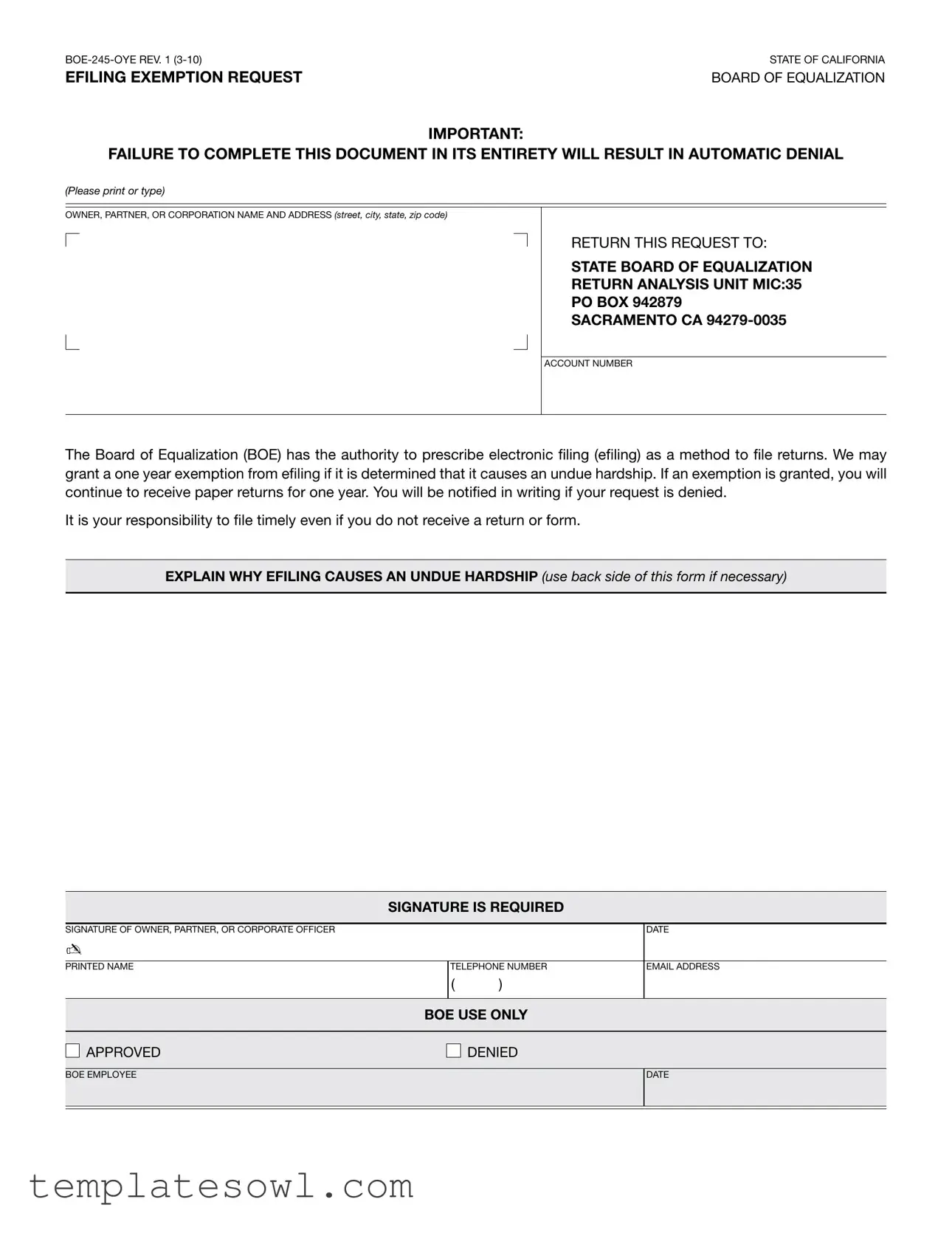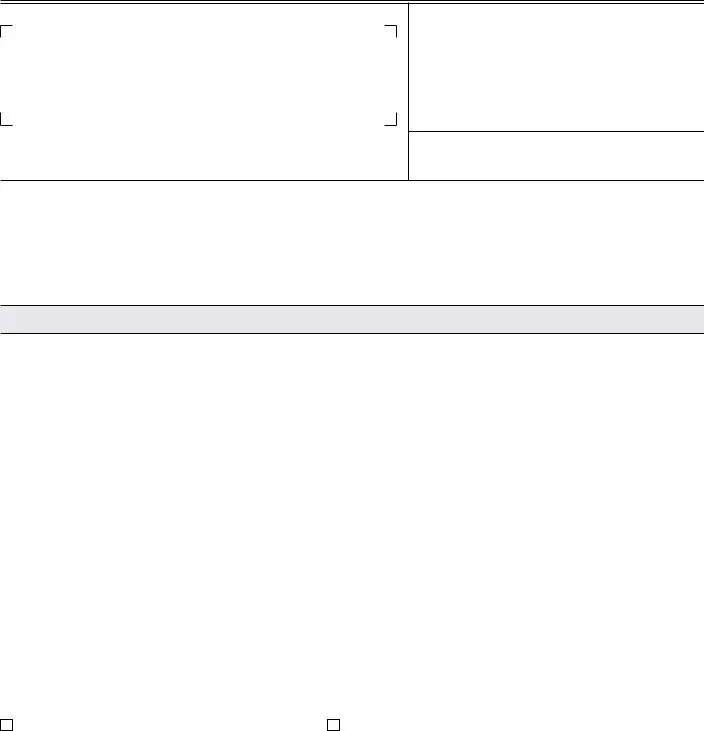When filling out the BOE-245 OYE form, many individuals make common mistakes that can lead to delays or automatic denials. One significant error is failing to complete all required sections. Each part of the form must be filled out accurately. Incomplete forms are often immediately rejected.
Another frequent mistake involves providing incorrect contact information. This includes not only the owner's name but also the address and telephone number. If the contact information is wrong, the Board of Equalization may have difficulty reaching you for any follow-up questions or clarifications.
Some individuals overlook the importance of clearly explaining their situation. The section for detailing why e-filing causes undue hardship must be thorough and persuasive. A vague explanation can result in a denial, as the board needs to understand the specific challenges presented.
Additionally, users sometimes forget to sign the form. A missing signature is an easy, yet serious oversight. The Board requires an official signature to validate the application; without it, the form will not be accepted.
Another mistake involves the date on the form. Providing an outdated or incorrect date will likely cause issues. It is essential to ensure that the date of signing is accurate, serving to confirm the validity of the request.
Some applicants fail to provide necessary documentation. Any additional materials that support the application should be included. Without supplementary evidence, the application may lack the necessary context for approval.
Misunderstanding instructions regarding the mailing process is also common. Applicants must ensure they send the form to the correct address specified in the instructions. Sending it to the wrong office can lead to significant delays.
Many individuals do not check their calculations where applicable. If there are any fees or qualifiers involved in the exemption request, confirming these figures is crucial. An error here can affect the overall request.
A final mistake often seen is the neglect of proper formatting. The form should be printed or typed neatly. Illegible handwriting can hinder the processing of the form, as important information may be misread or ignored.
By avoiding these common pitfalls when completing the BOE-245 OYE form, individuals can enhance their chances of approval and ensure a smoother process. Careful attention to detail is essential.

